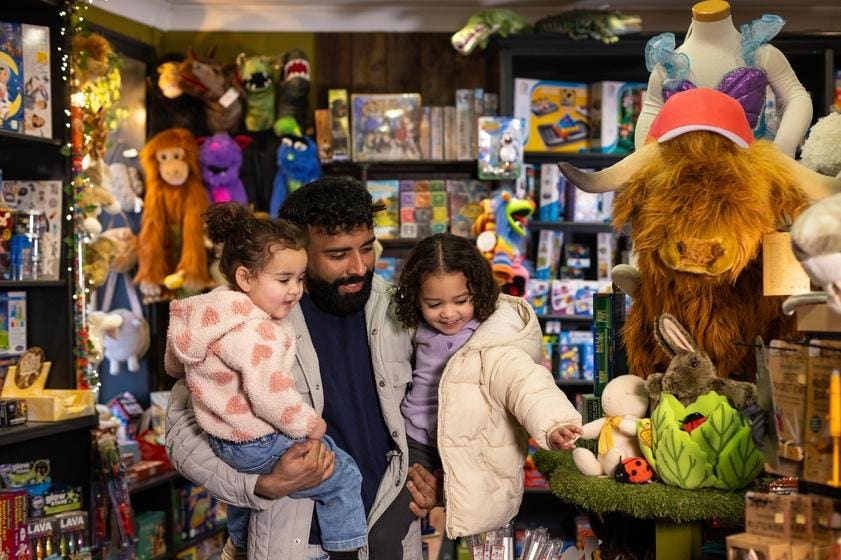Ryan McFarland, Founder & CEO of Strider Bikes.
Consumer goods brands feel a constant tension: the push for short-term sales vs. the pull of long-term brand value. Consumers feel it, as well. Take a step away from your business and think about how many times you’ve seen a company come out with a new model every year that’s supposed to be better than ever. Supposedly, they’ve worked out all the kinks. That is, until next year rolls around.
From the business side, this cycle persists because so many brands focus on churning out products that are designed for rapid turnover. The easiest example to point to is your phone. You know it’s designed to go obsolete so that you have to buy a new one every couple of years. We begrudgingly accept this as a reality because it has become the industry standard for a product we now can’t seem to live without.
But what about businesses that take the opposite approach? While many brands are worried that their company can’t survive without creating new opportunities for short-term sales, I argue that companies that build lasting products are better positioned for long-term success. Even as they sacrifice potential sales in the short term, this dedication is an investment in brand trust and customer loyalty.
The Business Case For Durability
My world is the children’s toy industry, where our customers—largely parents and grandparents—are very comfortable spending $20 to $30 on a toy that they know is not going to last. The consumer sees their purchase as a short-term-use throwaway item because that has become the industry standard. Toy companies routinely make toys that don’t last, understanding that they can win their customers’ dollars if the price is right, then win it again when the toy breaks, or gets lost, or the child outgrows the toy.
That might work in the short term, but that toy is not likely to win rave reviews and repeat customers for years. You’re not going to recommend to your friends a toy that you know won’t last. In order to win repeat business, that toy company then has to pour more money into brainstorming, manufacturing and marketing new products. As a result, they’ve built a brand that has a recognizable stamp because of the volume of products in the marketplace, but they haven’t built a reputation for reliability or created social capital in a readily recognizable product.
Now, let’s consider the economics of producing a toy that is built for long-term use. My own company has heard from families who have passed down our bikes to their siblings, cousins, neighborhood kids and beyond. I’ll be honest, I’ve had a lot of discussions about whether or not this is a good thing. Selling a product that can last 10+ years inherently limits sales opportunities.
You could certainly argue a company would be more profitable if its products broke down after one child was finished with them. That’s durable enough to make a family happy while still earning new sales. After nearly two decades in this industry, however, I’ve learned the business strength of durability.
The Value Of Customer Loyalty
Toys that last don’t get new sales right away, but they can win unmatched brand loyalty. Even at a higher price point, parents buy the next level of the toy for their growing child, or they’ll buy the toy again for their nieces and nephews. Perhaps more important than all of that, they spread the word. When parents see how tough and adaptable a toy is, they are more likely to become evangelists for that brand.
This goes way beyond making a single new purchase. Brand evangelists will tell their friends, “This toy is now on its third kid and they all love it” and write positive reviews, posting pictures of a well-loved toy. While that might mean a less units sold to that family, it also means the brand has gained a lifelong customer who will recommend the toy to everyone in their circle.
This reputation for quality can also play a huge role in purchase decisions. In today’s world of endless choices, many consumers rely on reviews, ratings and word-of-mouth recommendations. I believe that brands that focus on durability, regardless of industry, can win overwhelmingly positive customer feedback, which can, in turn, make it easier for new buyers to choose that brand with confidence. A high-quality product that has stood the test of time builds trust—something no amount of marketing dollars or new product lines can replicate.
Legacy Over Disposability
As consumers, we’re too used to seeing products that are rushed to market in the name of short-term sales. Frequent redesigns and products that fall apart create waste and frustration, even if they sell more units.
By deliberately avoiding that path and prioritizing durability and adaptability over planned obsolescence, your company can earn deeper trust. You can gain customers who better understand the value they’re getting for the price and urge their inner circle to trust that the slightly higher price tag is well worth the spend. In my experience, this kind of brand fandom can only happen when you put every effort toward making a product that is a constant presence in your customers’ homes for years.
When you can do that, you’ve built a brand that people believe in, products that people want to buy and a company that people are proud to support. That’s a business model built to endure.
Forbes Business Council is the foremost growth and networking organization for business owners and leaders. Do I qualify?
Read the full article here

